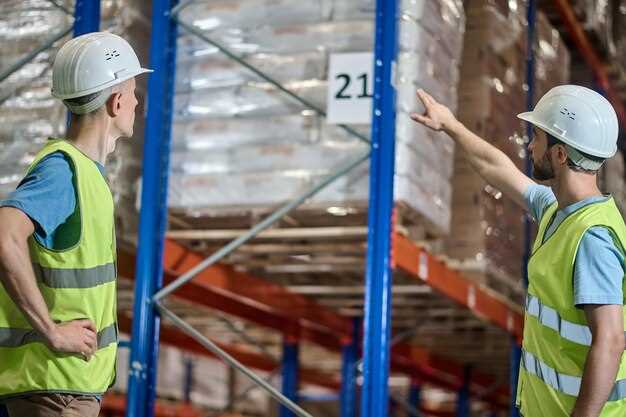
Effective storage practices are crucial for safeguarding products and materials from potential damage. Whether in warehouses, retail spaces, or home environments, improper storage can lead to a wide array of issues, including physical damage, environmental degradation, and financial losses. To mitigate these risks, it is essential to implement strategies that prioritize the integrity of stored items.
Understanding the nature of the materials being stored is the first step towards preventing damage. Different items have distinct requirements regarding temperature, humidity, and packaging. For instance, fragile items may need cushioning and secure shelving, while perishable goods require climate control to maintain their quality. By adapting storage conditions to meet these specific needs, the likelihood of damage can be significantly reduced.
In addition to customizing storage environments, employing systematic organization methods can enhance overall safety. Utilizing shelving systems that allow for proper ventilation, clearly labeling storage areas, and regularly inspecting inventory can all contribute to minimizing risk. These proactive measures not only prevent damage but also streamline the retrieval process, making it easier to manage stored goods efficiently.
Choosing the Right Storage Environment to Minimize Risk
Selecting an appropriate storage environment is crucial for prevention of damage to stored items. Factors such as temperature, humidity, light exposure, and air circulation significantly influence the integrity of various materials. To mitigate risks effectively, it is essential to assess the specific requirements of the items being stored.
Temperature control is vital, especially for sensitive products like electronics, perishables, or pharmaceuticals. Extreme temperatures can lead to malfunction, spoilage, or degradation. Implementing climate control systems, such as refrigeration or heating, ensures that temperature remains within the optimal range.
Humidity levels also play a critical role in preservation. High humidity can cause mold growth, rust, and corrosion, while low humidity may lead to cracking or drying out. Using dehumidifiers or humidifiers, depending on the necessity, can help maintain appropriate moisture levels, thereby preventing potential damage.
Proper lighting is essential as well. Exposure to direct sunlight can fade colors, weaken materials, and cause chemical reactions in certain items. Utilizing UV-filtered lighting or storing items in dark environments can reduce this risk, thus prolonging their lifespan.
Additionally, ensuring adequate air circulation prevents stagnant conditions that can lead to mildew and deterioration. Proper shelving arrangements and spacing between stored items facilitate airflow, enhancing overall storage conditions.
Regular monitoring of these environmental factors through the use of sensors or periodic assessments can lead to timely interventions, further enhancing prevention strategies against damage. Investing in the right storage solutions not only safeguards the integrity of items but also contributes to long-term cost efficiency by minimizing losses.
Implementing Proper Packing Techniques for Various Materials

Ensuring effective prevention of damage during storage requires the use of appropriate packing techniques tailored to different materials. Understanding the specific characteristics of each material is essential to apply the most suitable methods and ensure their safety over time.
For glass and fragile items, utilizing cushioned materials like bubble wrap or foam inserts is critical. These materials provide a protective layer that absorbs shocks and vibrations, significantly reducing the risk of breakage. Items should be securely wrapped and placed in sturdy boxes with ample padding on all sides.
When it comes to electronic equipment, moisture and electrostatic discharge are major concerns. Employing anti-static bags and silica gel packets will help mitigate these risks. Additionally, packing electronics in their original packaging, if available, can offer an extra layer of protection while ensuring that all components fit snugly.
For textiles and clothing, choosing breathable packing materials is crucial. Avoid using plastic bags, as they can trap moisture and lead to mold growth. Instead, opt for cotton or linen bags for long-term storage, ensuring items are clean and completely dry before packing.
Heavy materials, such as metal tools or machinery components, require robust packing methods. Utilize wooden crates or reinforced boxes to support the weight and prevent deformation or scratching. It’s advisable to secure items within these containers using straps or cushioning materials to limit movement during transit.
In summary, implementing correct packing techniques based on the material type is vital for preventing damage. Each category of items has unique characteristics that dictate specific packing solutions, ensuring their integrity during storage and transport.
Regular Inspection and Maintenance Protocols for Stored Items

To effectively prevent damage during storage, implementing regular inspection and maintenance protocols is crucial. These protocols help identify potential risks and ensure that stored items remain in optimal condition throughout their storage period.
First, establish a clear schedule for inspections. Depending on the type of items being stored, inspections may need to occur weekly, monthly, or quarterly. This schedule should take into account environmental factors such as humidity and temperature, which can accelerate deterioration.
During inspections, check for signs of damage, such as mold, rust, or pests. Make note of any changes in the condition of items, including discoloration or structural integrity. Addressing issues promptly can significantly reduce the risk of further damage.
Maintenance protocols should include cleaning stored items thoroughly before storage and repeating this process at each inspection. This helps prevent accumulation of dust and debris, which can lead to deterioration. Additionally, ensure that the storage environment is stable, controlling factors like moisture levels and temperature to create an unfavorable condition for mold and pests.
Documentation of inspections and maintenance activities is essential. Keeping detailed records allows for tracking of trends over time, which can inform future storage practices and highlight recurring issues that need to be addressed.
Lastly, training personnel involved in the storage process is vital. Ensure that they are aware of the inspection schedule and know how to identify potential threats to stored items. Regular training updates can reinforce the importance of these protocols and keep everyone aligned with best practices.




